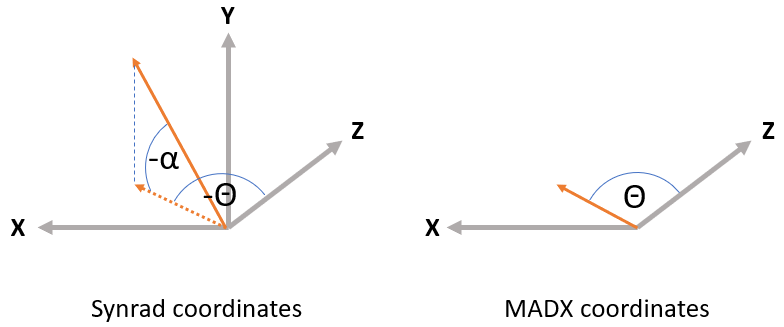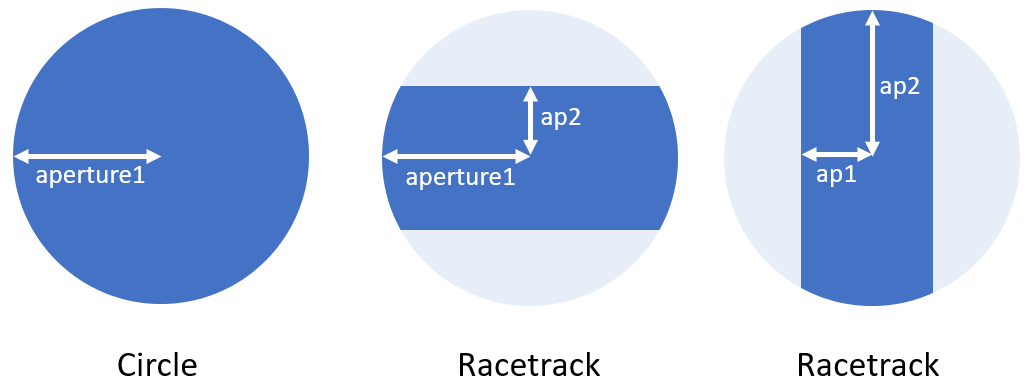Skip to main content
Opticsbuilder: column description
- Aperture: If the checkbox is ticked, it means that the element has its aperture defined. An aperture is constant throughout the element's full length. To make a transition (loft, taper), you need a drift element with no aperture defined - the tool will automatically treat it as a transition between the previous and next elements.
- Name: a custom name for the element, it doesn't need to be unique. If it describes a magnetic region, the Synrad param and mag files will have this filename.
- Length: Length of the element
- Dipole bending angle / field: you can fill either of the two, and using the beam mass and energy parameters (defined below the table), the tool will perform the conversion when you either set the reference element or press the "B <-> Angle" button. A positive bending angle increases the next element's starting theta.
- Quadrupole gradient / K1L: either the integrated K1 parameter or the field gradient. As above, conversion is automatic.
- Twiss s: If you imported a Twiss file, its s position. It is for information only, not used in calculations.
- Start s: Cumulated length from the user-defined reference element's beginning to the actual element's beginning. Calculated when you define the reference element.
- Start X: The Synrad X coordinate of the start of the element. See direction description below.
- Start theta: the starting theta angle of the element. It is the MADX-defined theta, so a positive value is a rotation towards the X direction (see below). The Synrad theta is the opposite (negative) of this theta. Each element's bending angle is added to the theta of the following element.
- Start/end Z: Synrad coordinates, see explanation below.
- dX, dY: horizontal and vertical offset of the beam, compared to the survey "ideal" beam position, at the element's starting point. The ideal survey position is always in the XZ plane, and is calculated from the user-defined reference point taking into account only the beding angles and the element lengths.
- dX/dS, dY/dS: direction offset from the ideal beam direction. The ideal beam direction is always horizontal and is rotated by theta (sum of bending angles) compared to the Z direction.
- betaX, betaY, etaX, eta'X, alphaX, alphaY: lattice functions, more info here. These values will be written in the generated BXY file.
- Aperture type: currently either circle or racetrack. You can also set a custom name that is in the aperture library.
- Aperture 1: radius (if circle) or horizontal half-width of bounding box (if ellipse or racetrack), or bounding box width for custom aperture
- Aperture 2: not used (if circle) or vertical half-width of bounding box (if ellipse or racetrack), or bounding box height for custom aperture
- Aperture 3,4: custom aperture X, Y offset



